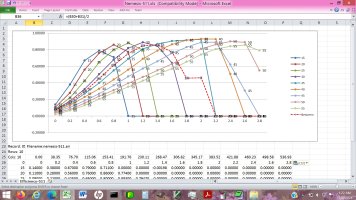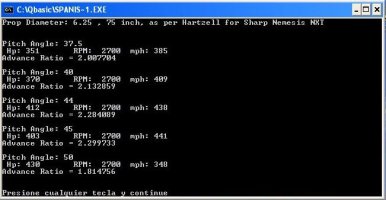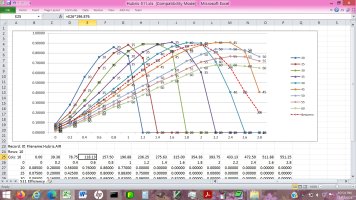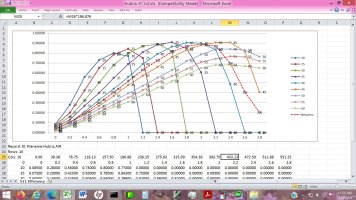aleatorylamp
Charter Member
Good morning, Ivan,
Thanks for your post.
You mention:
>I downloaded and installed your Hubris HXT as "Nemesis" on my Game Machine.
>I figure whenever a release version comes out, it will get overwritten.
Well, that´s why I wanted to delete the Hubris HXT from Post #66 because it was only meant as a vehicle for the Hubris Proof of Concept exercise, the .air file being irrelevant because it would get another one anyway but I can´t find the option to delete attachments anymore, I know it existed before, so now I´m landed with it and that model is redundant.
What would really only be to the point is attaching my Nemesis model and .air file, but that would clutter things up even more.
You mention:
>... at 17,500 Feet. I got 434 MPH which is much lower than what you are getting.
How strange, there seems to be a difference between my computer and yours. This is not the first time I have seen strange differences with someone else.
You also mention:
>The model enters the simulator at too steep an angle and the damping on the tail wheel is too low.
OK, I´ll look into that.
Update: I´d completely forgotten about the Dp file of course! Now I´ve put one in, without any bombs or guns, and only got a marginal speed increase of 0.4 to 0.7 mph depending on altitude, but no change in Hp.
My model doesn´t include ADI, as that option seems not to have been standard for all Nemesis NXT models, but the N333XT record breaking machine had it, and depending on the weight category it was competing, the ADI tank was taken out or left in. I believe they even took out the flight computer and achieved a higher record.
In the spec sheet for the sale of the NXT777XT, amongst the equipment installed listed, ADI is not mentioned, but it does mention 440 mph at 17500 ft. Then, on the official Nemesis NXT site, the 407 mph record for 5300 ft for the N333XT without ADI would apply to the the N777XT too. There is a mention of a 416 mph record, but I´m not sure if it is with or without ADI. The category definitions are a rather confusing.
You mention:
> Of course, to stay under MTOW with the ADI system installed and two passengers, you can't carry full fuel.
Yes, I agree. So, my weight calculation is: Empty weight 1600 lb, One Pilot: 200 lb, Oil: 60 lb. = 1860 lb, and I still have to fix the Dp file.
In Post #78 you mentioned
>I would suggest multiplying the POWER COEFFICIENT table values for 45 degrees by 1.02 (increase by 2 percent). That would be after you have gotten the engine power down a bit at 17,500 Feet.
OK, but I haven´t been able to get the power down for that altitude. Nevertheless I multiplied the POWER COEFFICIENT table values for 45 degrees by 1.02 (increase by 2 percent), with negligible improvements - of course, as I have to get power down a bit first.
Another thing: My Nemesis NXT has a tendency to dive that I missed after over-correcting the strong tendency to soar it had. A better setting in record #1101 Primary Aerodynamics "Pitch Moment Coeff. ad AoA=0" would be -6.
Have a nice Sunday.
Cheers,
Aleatorylamp
Thanks for your post.
You mention:
>I downloaded and installed your Hubris HXT as "Nemesis" on my Game Machine.
>I figure whenever a release version comes out, it will get overwritten.
Well, that´s why I wanted to delete the Hubris HXT from Post #66 because it was only meant as a vehicle for the Hubris Proof of Concept exercise, the .air file being irrelevant because it would get another one anyway but I can´t find the option to delete attachments anymore, I know it existed before, so now I´m landed with it and that model is redundant.
What would really only be to the point is attaching my Nemesis model and .air file, but that would clutter things up even more.
You mention:
>... at 17,500 Feet. I got 434 MPH which is much lower than what you are getting.
How strange, there seems to be a difference between my computer and yours. This is not the first time I have seen strange differences with someone else.
You also mention:
>The model enters the simulator at too steep an angle and the damping on the tail wheel is too low.
OK, I´ll look into that.
Update: I´d completely forgotten about the Dp file of course! Now I´ve put one in, without any bombs or guns, and only got a marginal speed increase of 0.4 to 0.7 mph depending on altitude, but no change in Hp.
My model doesn´t include ADI, as that option seems not to have been standard for all Nemesis NXT models, but the N333XT record breaking machine had it, and depending on the weight category it was competing, the ADI tank was taken out or left in. I believe they even took out the flight computer and achieved a higher record.
In the spec sheet for the sale of the NXT777XT, amongst the equipment installed listed, ADI is not mentioned, but it does mention 440 mph at 17500 ft. Then, on the official Nemesis NXT site, the 407 mph record for 5300 ft for the N333XT without ADI would apply to the the N777XT too. There is a mention of a 416 mph record, but I´m not sure if it is with or without ADI. The category definitions are a rather confusing.
You mention:
> Of course, to stay under MTOW with the ADI system installed and two passengers, you can't carry full fuel.
Yes, I agree. So, my weight calculation is: Empty weight 1600 lb, One Pilot: 200 lb, Oil: 60 lb. = 1860 lb, and I still have to fix the Dp file.
In Post #78 you mentioned
>I would suggest multiplying the POWER COEFFICIENT table values for 45 degrees by 1.02 (increase by 2 percent). That would be after you have gotten the engine power down a bit at 17,500 Feet.
OK, but I haven´t been able to get the power down for that altitude. Nevertheless I multiplied the POWER COEFFICIENT table values for 45 degrees by 1.02 (increase by 2 percent), with negligible improvements - of course, as I have to get power down a bit first.
Another thing: My Nemesis NXT has a tendency to dive that I missed after over-correcting the strong tendency to soar it had. A better setting in record #1101 Primary Aerodynamics "Pitch Moment Coeff. ad AoA=0" would be -6.
Have a nice Sunday.
Cheers,
Aleatorylamp
Last edited:




